Page: 1 | 2 | 3 | 4 | 5 | 6 | 7 | 8 | 9
Choose the correct answer from the given options. Find answers and solution to the questions at the bottom of the page.
31. 8 is 5 percent of what number?
(A) 140
(B) 150
(C) 160
(D) 170
(A) 140
(B) 150
(C) 160
(D) 170
32. An article was sold for Rs.360 after a 25 percent discount. What was the actual price of the article in rupess?
(A) 470
(B) 480
(C) 490
(D) 500
(A) 470
(B) 480
(C) 490
(D) 500
33. The length of the sides of the parallelogram is given in centimeters. What is the area in cm2 of the given parallelogram?
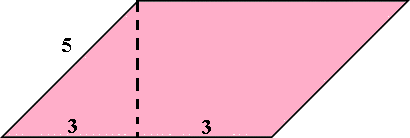

(A) 20
(B) 22
(C) 24
(D) 26
(B) 22
(C) 24
(D) 26
34. If  books cost
books cost  rupees. Then how much will
rupees. Then how much will  books cost?
books cost?
(A)
(B)
(C)
(D)
(A)
(B)
(C)
(D)
35. If the ratio of two numbers is 8:3, and their difference is 25. Then what are the two numbers?
(A) 15 and 40
(B) 17 and 42
(C) 20 and 45
(D) 22 and 47
(A) 15 and 40
(B) 17 and 42
(C) 20 and 45
(D) 22 and 47
ANSWERS: NTS SAMPLE PAPER (QUANTITATIVE)
31(C) 32(B) 33(C) 34(D) 35(A)
31(C) 32(B) 33(C) 34(D) 35(A)
SOLUTIONS: NTS SAMPLE PAPER (QUANTITATIVE)
31. (C) First convert from English to Mathematics
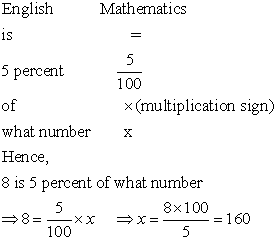

32. (B) The article was sold after 25% discount. Hence, the given price Rs.360 is 75% of the actual price. So,


33. (C) We can calculate the height of the parallelogram (the dotted line) by using Pythagoras formula, (Hypotenuses)2 = (Perpendicular)2 + (Base)2
52 = (Height)2 + 32 ∵Perpendicular of Triangle = Height of Parallelogram
(Height)2 = 16
Height = 4
52 = (Height)2 + 32 ∵Perpendicular of Triangle = Height of Parallelogram
(Height)2 = 16
Height = 4
Now, Area of Parallelogram = base × height
= 3×4
= 12 cm2
= 3×4
= 12 cm2
34. (D)
 books →
books →  rupees
rupees
 books →
books →  rupees
rupees
By cross multiplication, we have


By cross multiplication, we have




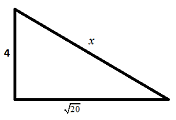 (A) 5
(A) 5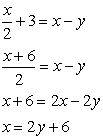

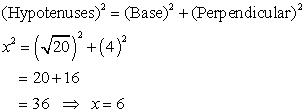

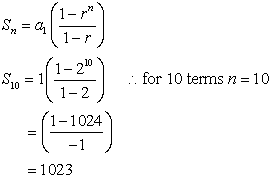
 means extremely careful. So, punctilious is the higher degree of careful, as boiling is the higher degree of lukewarm
means extremely careful. So, punctilious is the higher degree of careful, as boiling is the higher degree of lukewarm  .
. means highly skilled.
means highly skilled. means to free from blame.
means to free from blame. means greed (a strong desire for more wealth, property etc.). And, Largess
means greed (a strong desire for more wealth, property etc.). And, Largess  means generous in giving money. Hence, largess is the opposite to cupidity.
means generous in giving money. Hence, largess is the opposite to cupidity. means wise, hence unwise is the opposite.
means wise, hence unwise is the opposite. means irrelevant, hence relevant is the opposite.
means irrelevant, hence relevant is the opposite. means risky, hence safe is the opposite.
means risky, hence safe is the opposite. means traitor, hence faithful is the opposite.
means traitor, hence faithful is the opposite. means extremely hungry. Hence, starving is the synonym.
means extremely hungry. Hence, starving is the synonym. means lacking courage. Hence, cowardly is the synonym.
means lacking courage. Hence, cowardly is the synonym. means outline (a brief overview). Hence, outline is the synonym.
means outline (a brief overview). Hence, outline is the synonym. means extremely rude. Hence, rude
means extremely rude. Hence, rude  has the closest meaning.
has the closest meaning. means awareness or knowledge of something.
means awareness or knowledge of something.

